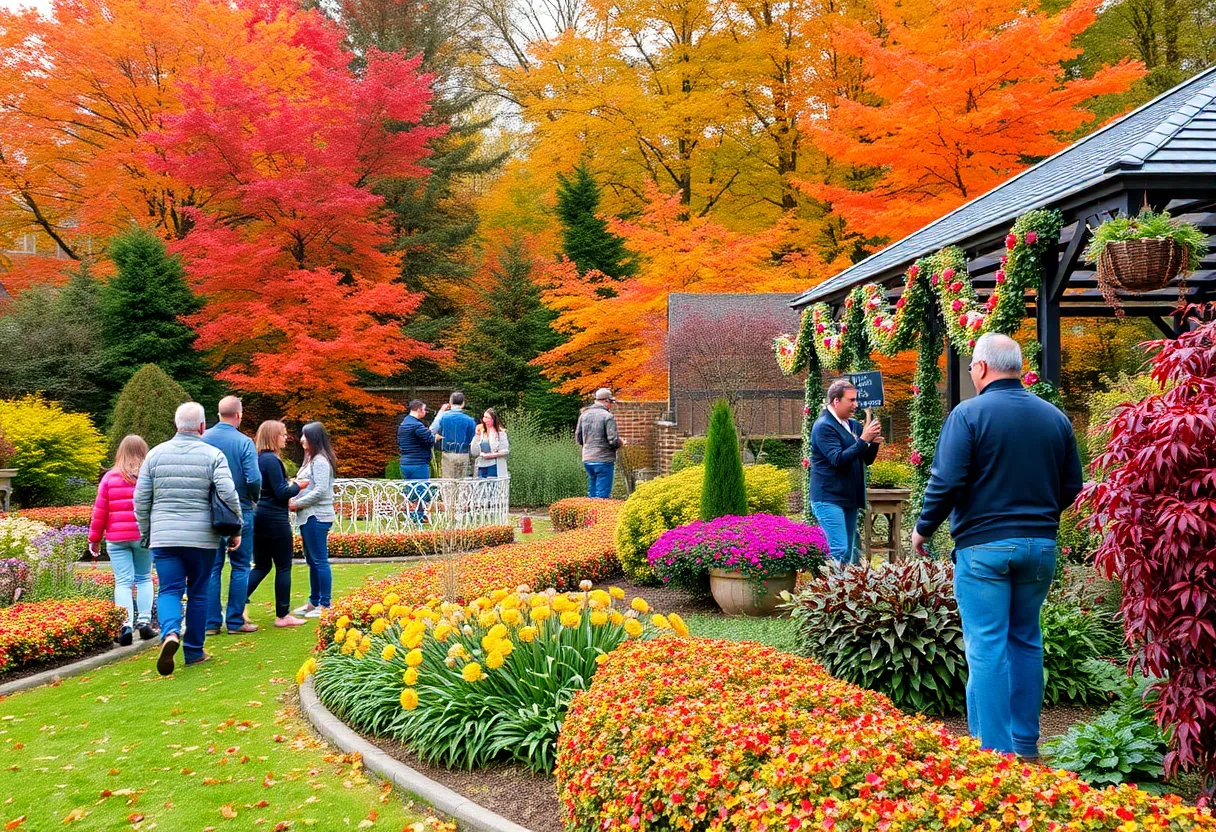10 Creative Ways to Garden in Philadelphia’s Urban Spaces for Maximum Impact
Urban gardening in Philadelphia presents an exceptional opportunity for residents to transform constrained spaces into vibrant and productive environments. Implementing innovative strategies allows for maximizing yield, aesthetic appeal, and ecological benefits. Below are ten distinctly effective approaches to elevate urban gardening efforts within Philadelphia’s diverse cityscape.
1. Utilize Vertical Gardening Techniques
In densely constructed urban environments, _vertical gardening_ is indispensable for optimizing limited ground space. Techniques such as installing trellises, wall-mounted planters, and vertical frames enable the growth of climbing plants—including tomatoes, cucumbers, beans, and ornamental vines. This approach significantly increases planting area without expanding the footprint, providing a visual multi-layered aesthetic that enhances urban landscapes.
2. Establish Community Gardens
_Community gardens_ serve as vital hubs for social cohesion and local food production. Philadelphia’s neighborhoods benefit from accessible shared spaces, where residents can cultivate individual plots or participate in collective gardening activities. Such involvement reduces food insecurity, encourages environmental stewardship, and fosters neighborhood ties. Creating or engaging with existing community gardens ensures equitable access to gardening resources and knowledge.
3. Implement Container Gardening
_Container gardening_ offers flexible, space-efficient cultivation for urban dwellers. Using pots, barrels, or other containers, gardeners can select suitable soil mixes for herbs, vegetables, and ornamental plants. Containers provide mobility, allowing adjustment for optimal sunlight, protection from harsh weather, and seasonal transition. This method facilitates personalized garden setups on balconies, patios, rooftops, or small yards.
4. Grow Native Plants
Incorporating native plants tailored to Philadelphia’s climate and soil conditions ensures low maintenance and resource efficiency. Native species such as Black-Eyed Susans, Purple Coneflowers, and Daylilies support local pollinators, including bees and butterflies, thus enhancing biodiversity. The adoption of native flora reduces dependence on supplemental watering and fertilizers, aligning with sustainable urban gardening practices.
5. Create Rooftop Gardens
_Rooftop gardens_ leverage underutilized rooftop spaces to emulate traditional gardens within urban settings. These can serve multiple functions, including insulation, stormwater mitigation, and food production. Proper structural assessment and weight capacity considerations are essential. A well-designed rooftop garden can transform neglected rooftops into lush, productive landscapes, particularly beneficial where ground-level space is scarce.
6. Practice Hydroponic Gardening
_Hydroponics_ is a soil-free cultivation method that employs nutrient-rich water solutions for plant growth. This highly space-efficient system can be implemented indoors or outdoors, making it ideal for urban settings with limited space and soil quality constraints. Hydroponic systems often yield rapid crop cycles and high-quality produce, appealing to urban residents seeking self-sufficiency and fresh food access.
7. Establish Pollinator Habitats
_Pollinator habitats_ are critical for supporting urban biodiversity and crop pollination. Integrate a variety of flowering plants that bloom across different seasons, such as Bee Balm, Goldenrod, and Milkweed. Creating habitats with native flora encourages pollinator populations, which directly impact plant productivity and ecosystem resilience within city environments.
8. Implement Rainwater Harvesting
_Rainwater harvesting_ involves collecting and utilizing stormwater runoff from rooftops or paved surfaces. Installing rain barrels or larger retention systems enables gardeners to reduce dependence on municipal water supplies and ensure natural, chemical-free watering for plants. This technique supports water conservation, especially during dry periods, reinforcing sustainable urban gardening practices.
9. Engage in Guerrilla Gardening
_Guerrilla gardening_ refers to the unauthorized planting and cultivation of neglected or abandoned urban spaces. This activism can counteract urban decay, enhance visual appeal, and promote community cohesion. Prior to undertaking such projects, understanding local regulations and collaborating with community organizations helps ensure long-term sustainability and positive neighborhood change.
10. Participate in Urban Farming Initiatives
_Urban farming_ involves large-scale food production within city limits, often through dedicated urban farms or collective plots. In Philadelphia, these initiatives produce fresh, healthy food for local communities and serve as educational platforms for sustainable agriculture. Active engagement in urban farming can enhance the local food system, provide employment opportunities, and deepen community resilience.
Maximizing Impact with Intentional Design and Community Engagement
Each of these techniques emphasizes strategic site use, resource efficiency, and community participation. When tailored to the specific microclimate and space constraints of Philadelphia neighborhoods, they collectively enable urban gardeners to achieve substantial ecological, social, and economic benefits.
Summary of Key Benefits
| Technique | Core Benefit | Ideal For | Key Consideration |
|---|---|---|---|
| Vertical Gardening | Space maximization & enhanced aesthetics | Balconies & small yards | Support structure strength |
| Community Gardens | Food security & social bonds | Neighborhoods with available land | Local regulation compliance |
| Container Gardening | Flexibility & portability | Balconies, patios | Drainage management |
| Native Plants | Low maintenance & ecological support | Yards & planters | Species selection for climate |
| Rooftop Gardens | Utilize unused space & insulation | Suitable rooftops | Structural capacity assessment |
| Hydroponic Gardening | High yield & space efficiency | Indoor & small outdoor areas | Water quality & nutrient balance |
| Pollinator Habitats | Supports biodiversity & pollination | Any sustainable garden | Bloom staggered plantings |
| Rainwater Harvesting | Water conservation & irrigation | Anywhere with roof access | Proper system setup & filters |
| Guerrilla Gardening | Urban renewal & activism | Neglected spaces | Legal & safety considerations |
| Urban Farming | Food sovereignty & education | Large vacant lots or farms | Regulatory compliance |
Frequently Asked Questions
What are the most effective methods for maximizing small garden spaces in Philadelphia?
Combining vertical gardening, container planting, and native species can significantly enhance small spaces. These methods allow for efficient use of limited ground and encourage ecological harmony.
Combining vertical gardening, container planting, and native species can significantly enhance small spaces. These methods allow for efficient use of limited ground and encourage ecological harmony.
How can residents support local pollinators within urban gardens?
Plant a variety of native, nectar-rich flowers that bloom at different times of the year. Creating habitats with diverse plantings supports bees and butterflies, vital for crop pollination and biodiversity.
Plant a variety of native, nectar-rich flowers that bloom at different times of the year. Creating habitats with diverse plantings supports bees and butterflies, vital for crop pollination and biodiversity.
What considerations are necessary before creating a rooftop garden?
Assess the structural capacity of the building, confirm sunlight exposure, and evaluate access for maintenance. Proper planning ensures safety and long-term viability.
Assess the structural capacity of the building, confirm sunlight exposure, and evaluate access for maintenance. Proper planning ensures safety and long-term viability.
Are there sustainable methods suitable for large-scale urban food production?
Yes. Urban farming initiatives, using raised beds, hydroponics, and permaculture principles, support large-scale food production while maintaining environmental sustainability.
Yes. Urban farming initiatives, using raised beds, hydroponics, and permaculture principles, support large-scale food production while maintaining environmental sustainability.
Summary of Key Features
- Space Optimization: Vertical, rooftop, and container methods make efficient use of limited areas.
- Sustainable Practices: Native plants, rainwater harvesting, and pollinator habitats promote ecological health.
- Community Engagement: Community gardens, guerilla gardening, and urban farming foster social ties and educational opportunities.
- Resource Efficiency: Hydroponics and rainwater systems conserve water and inputs, maximizing productivity with minimal waste.
Author: STAFF HERE PHILADELPHIA WRITER
The PHILADELPHIA STAFF WRITER represents the experienced team at HEREPhiladelphia.com, your go-to source for actionable local news and information in Philadelphia, Philadelphia County, and beyond. Specializing in "news you can use," we cover essential topics like product reviews for personal and business needs, local business directories, politics, real estate trends, neighborhood insights, and state news affecting the area—with deep expertise drawn from years of dedicated reporting and strong community input, including local press releases and business updates. We deliver top reporting on high-value events such as Mummers Parade, Philadelphia Flower Show, and Thanksgiving Day Parade. Our coverage extends to key organizations like the Greater Philadelphia Chamber of Commerce and United Way of Greater Philadelphia, plus leading businesses in telecommunications, food services, and healthcare that power the local economy such as Comcast, Aramark, and Children's Hospital of Philadelphia. As part of the broader HERE network, we provide comprehensive, credible insights into Pennsylvania's dynamic landscape.





